Look Ahead: Community design for Lismore
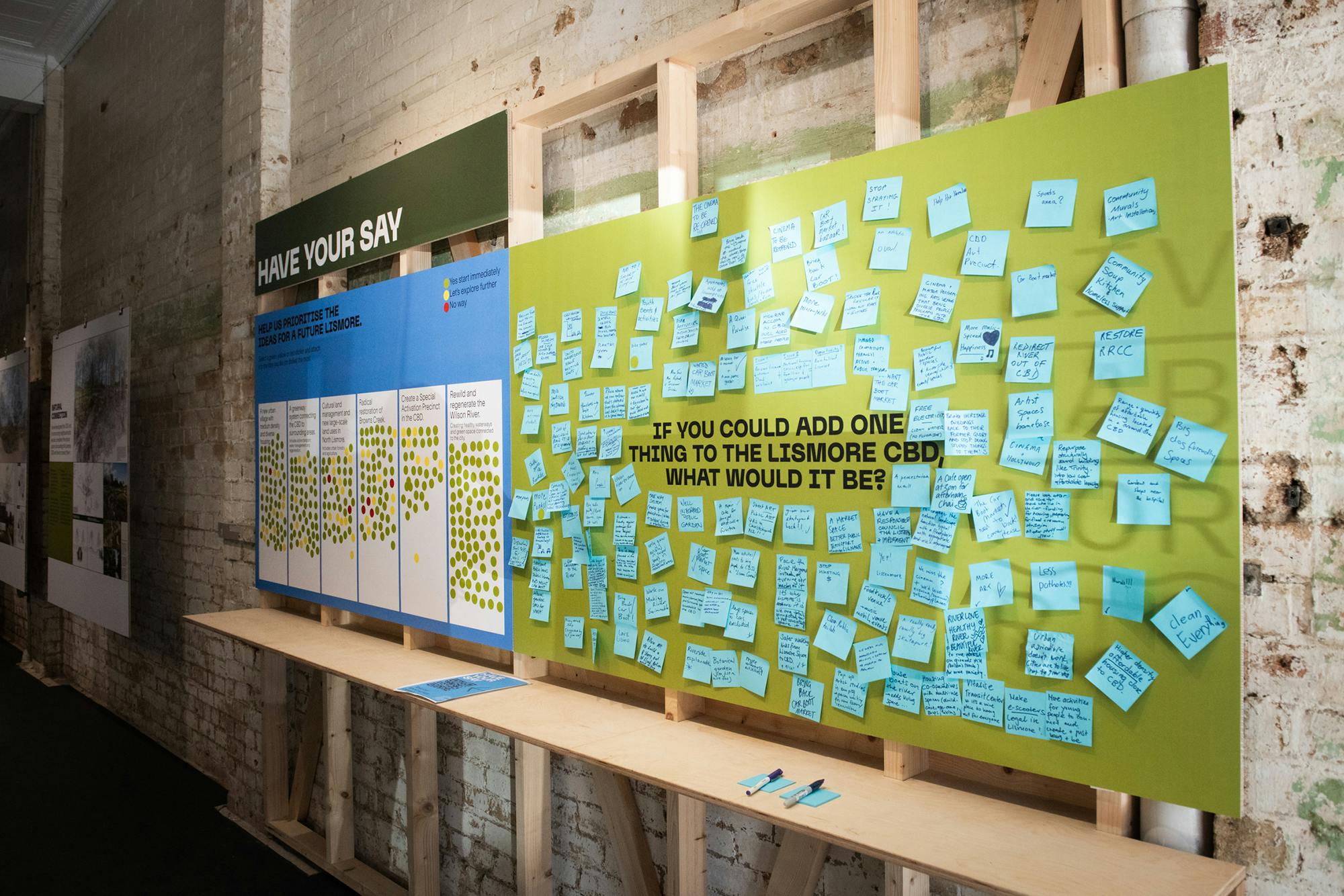
Project
Exhibition
Events
A small but mighty guide to a more resilient Lismore.
Look Ahead, is a community-centred effort dedicated to creating a bold, forward thinking vision for Lismore’s future, collectively charting a path toward a stronger, more resilient and adaptive city.
We launched Look Ahead in response to widespread calls from the community for a clear plan to guide Lismore’s recovery and build long-term resilience.
During 2024, we undertook a co-design process to bring together local knowledge and technical expertise. We hosted community workshops, held many meetings, mobilised a network of world-leading experts, coordinated in-depth design and planning sessions, and shared the process and the outcomes with the wider community – all aimed at reimagining what resilience could look like for Lismore.
The result? A vision that unites five flood-resilient strategies: a blueprint to transform Lismore into a thriving, adaptable city prepared for future challenges.
A vision for a future Lismore.
We've packed 10 months of work into this small but mighty guide.

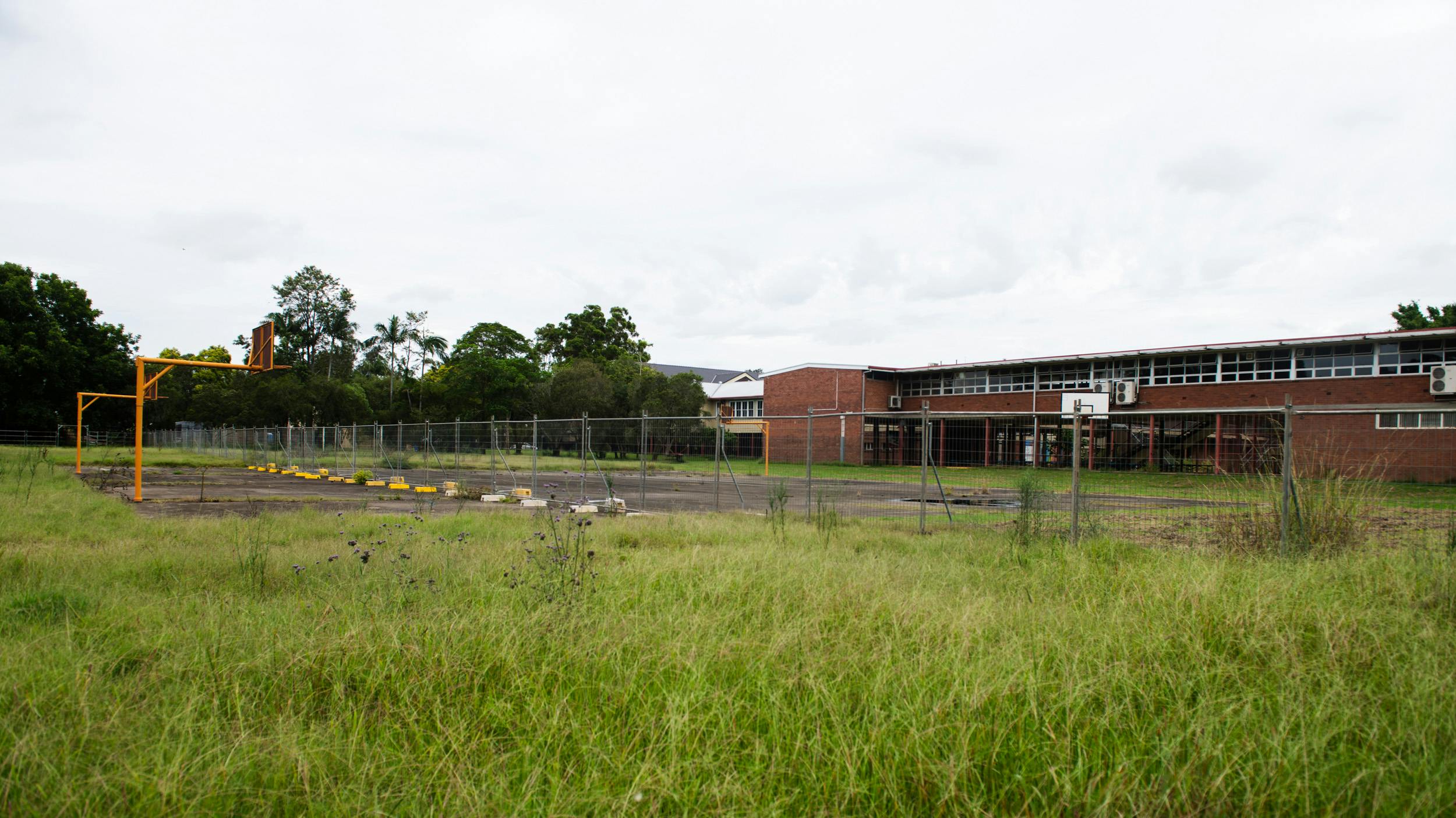
Richmond River High School, North Lismore, 2024. Image by Elise Derwin.
Hope and certainty
We know (from our own experience) that people recovering from disaster need plans with as much certainty as possible and deserve a clear plan about future developments in their community. It’s difficult to make informed decisions about our houses, jobs, children, businesses and investments without some certainty and a path forward.
Focused start, greater impact
In the absence of any significant resources to do this work, we chose to focus on Lismore’s CBD and its surrounding flood-prone neighbourhoods. We are acutely aware there are communities across the Northern Rivers that also need future plans. Look Ahead focused on Lismore CBD as a starting point to show that this is the best process to help communities across the Northern Rivers build their futures.
Independent and engaged
Look Ahead is backed by the NSW Government, University of Technology Sydney and Southern Cross University. We have consulted with the NSW Reconstruction Authority and the Lismore City Council but all work has been done independently and we hope it will inform their activities going forward. Community engagement is the cornerstone of our work and we’re proud to work with Lismore residents to plan a future together.
Watch a short clip about the Look Ahead process. Note: this video contains footage from the 2022 floods.

Collaboration for the best results
We believe when local, community-based knowledge connects with technical expertise we arrive at the best strategies for adaptation and systems change. We’ve applied this approach to the Look Ahead co-design process.
Refer to the diagram below for the stages in our process.
We consulted with a broad representation of the Lismore community through public workshops and conversations — community organisations, major employers, environmental groups, local businesses, arts and cultural organisations, Widjabul Wia-bal people of the Bundjalung Nation, schools, land management groups, local professionals, farmers, school groups and young people.
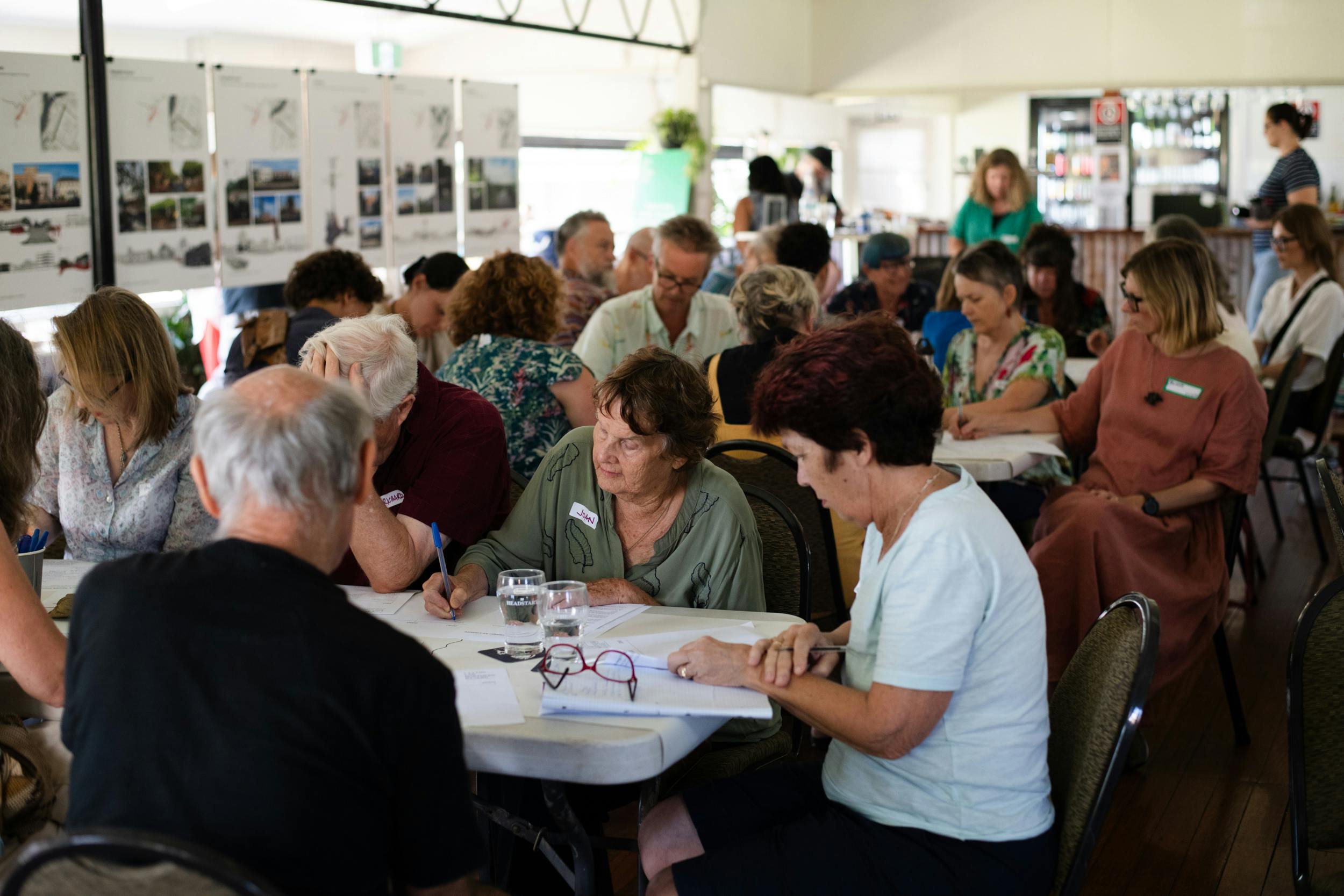
Community meeting held in Lismore City Bowling, Feb 2024. Image by Elise Derwin.
Community ambitions
In February 2024 we held a number of community meetings — from these some broad consensus began showing about local issues and aspirations for Lismore.
Key themes emerged > here are the top eight:
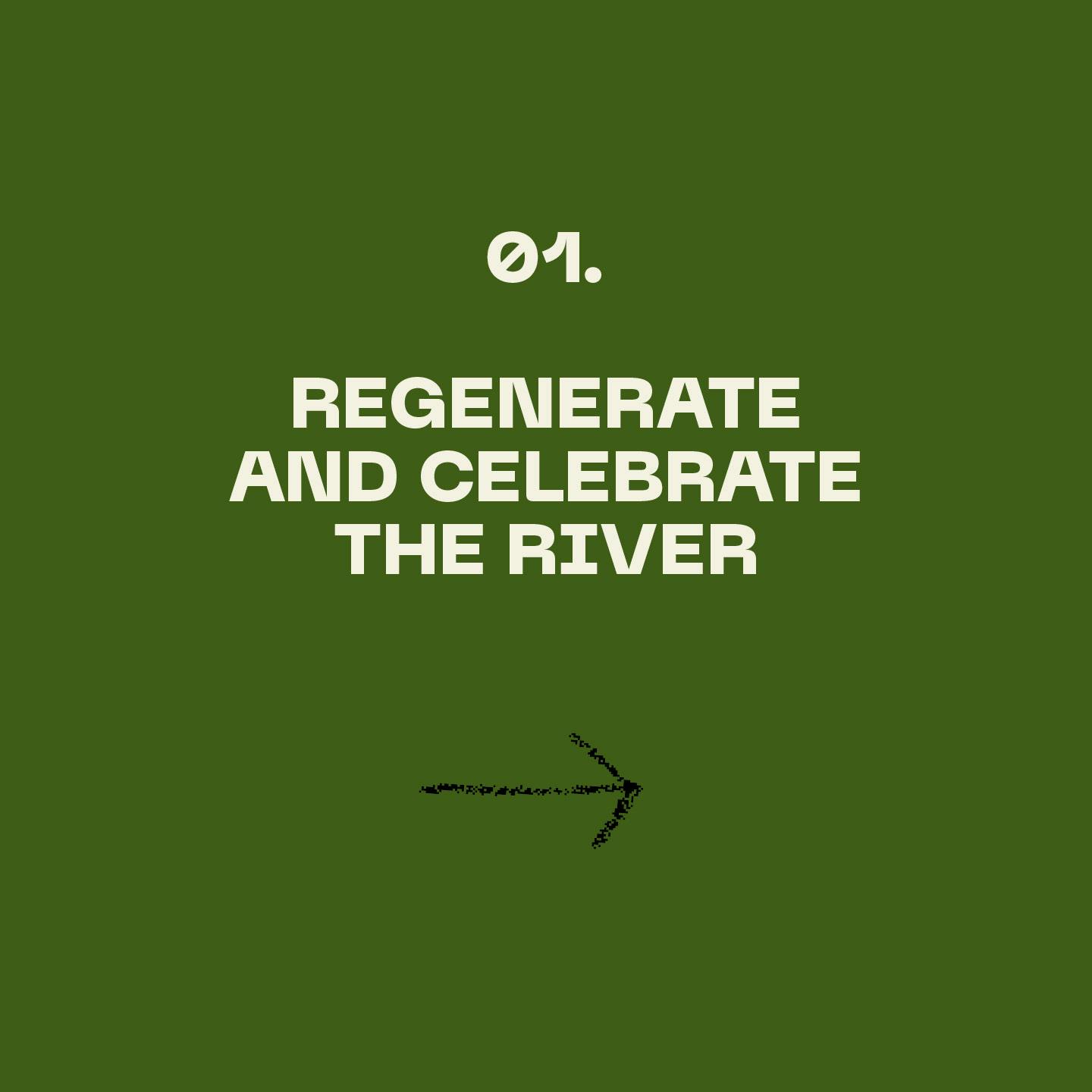

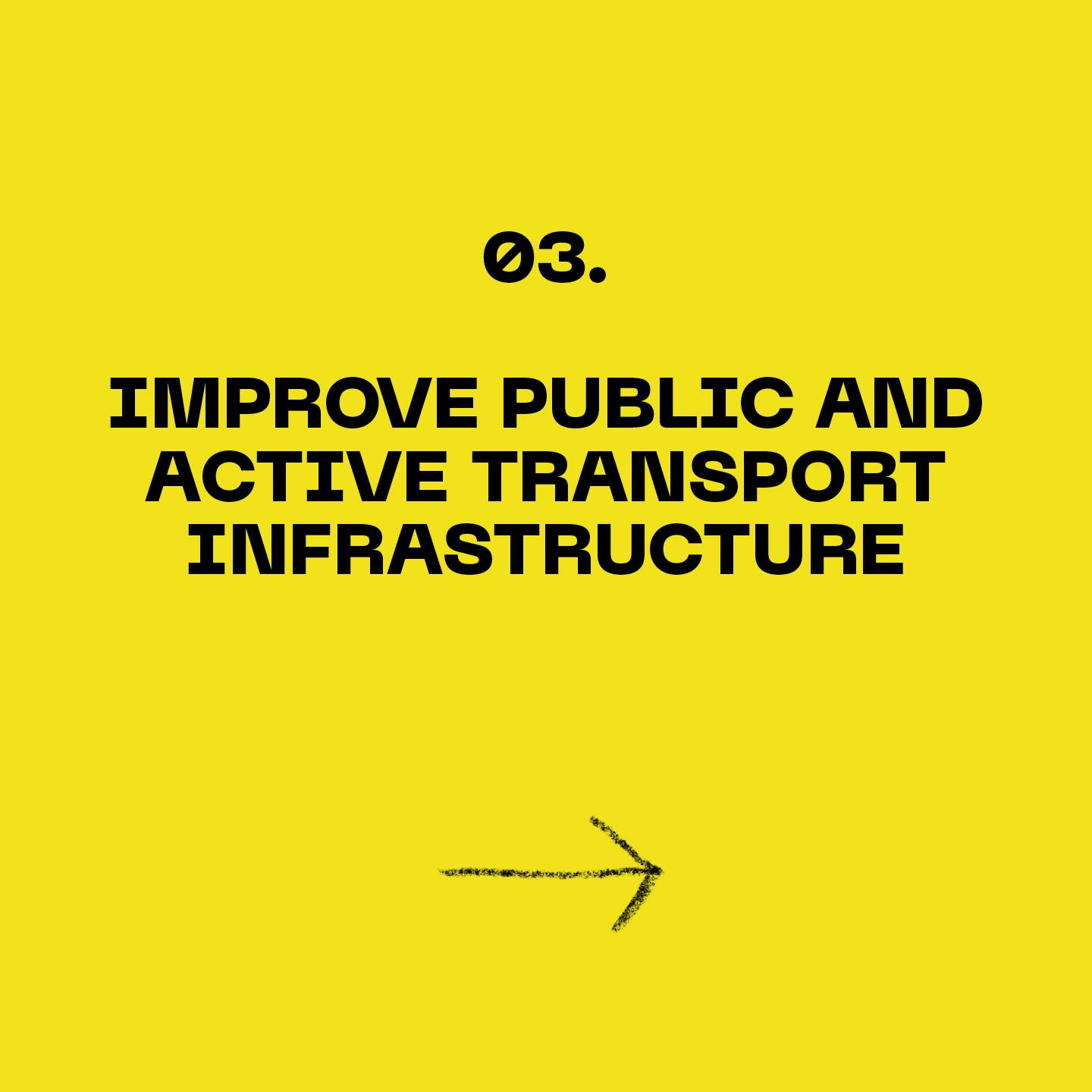



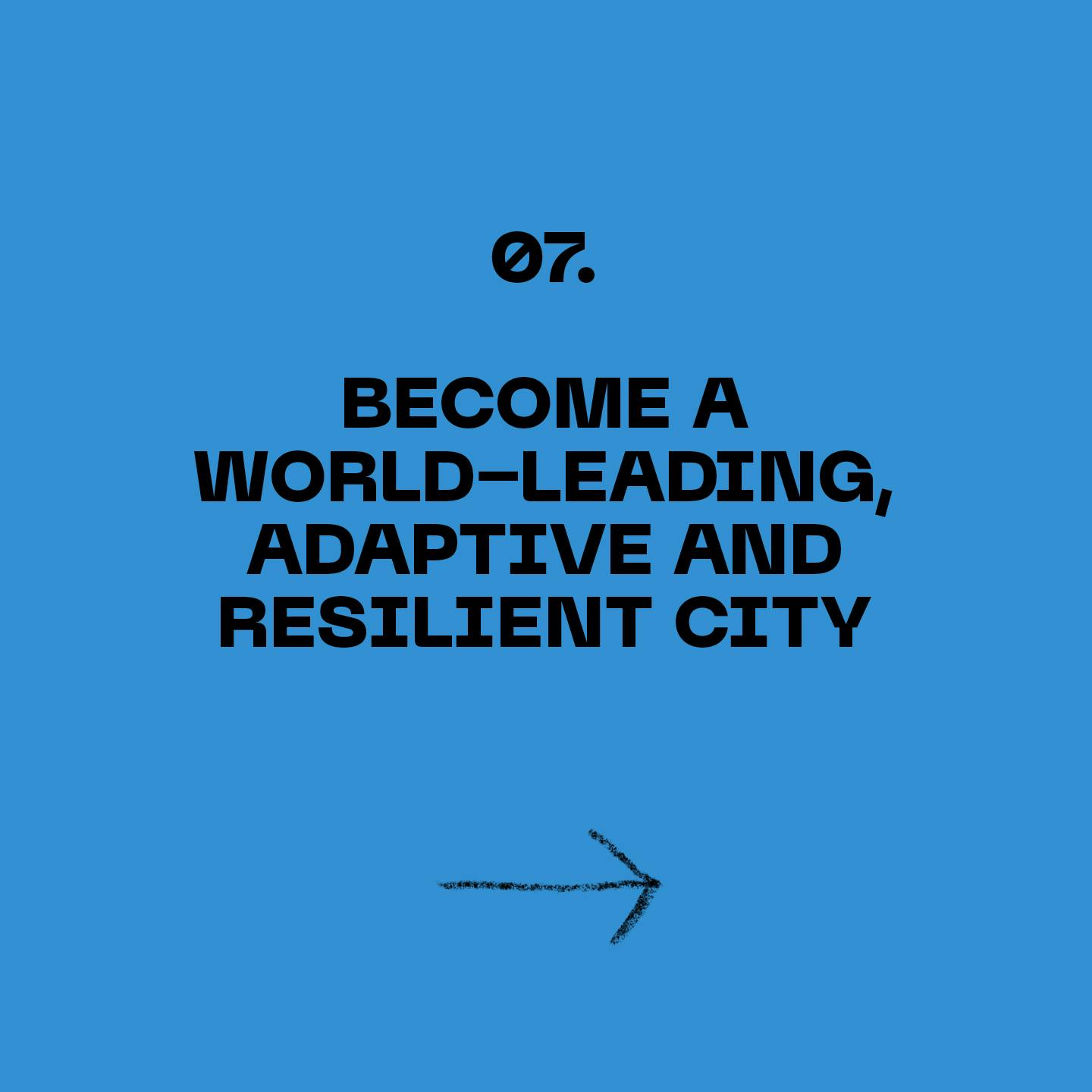
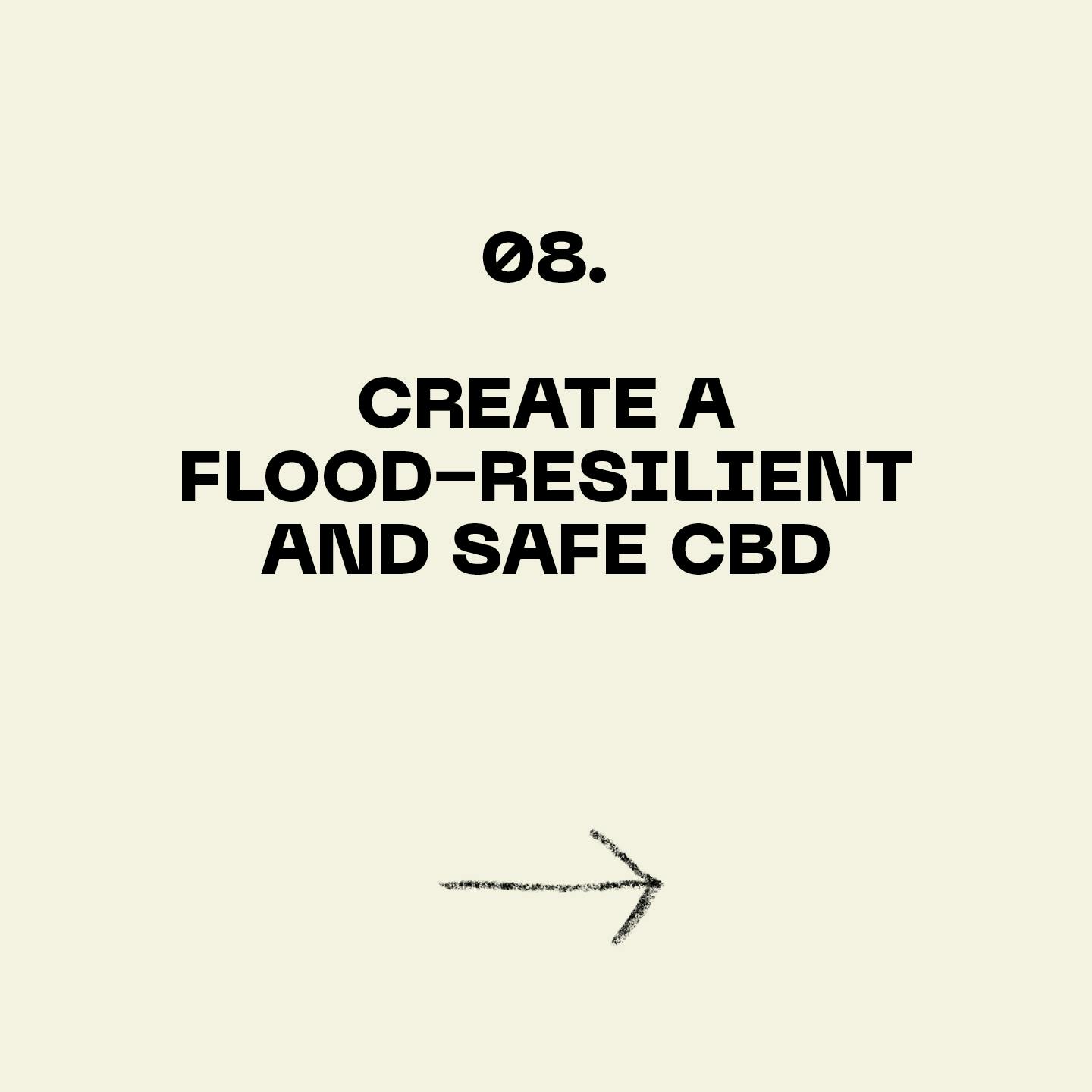
Community meetings summary.
Key themes emerged from participants, about local issues and aspirations.
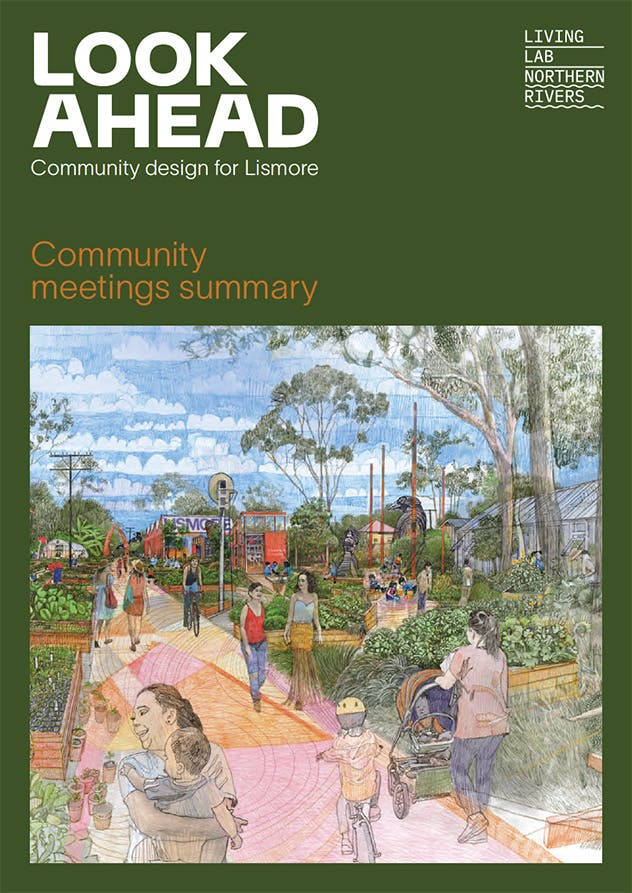
Future scenarios
We brought together a team of expert designers, planners, engineers and architects to address the challenges as defined by the community and research. Together they’ve created scenarios for Lismore’s future.
These are an ongoing work in progress. They have been directly informed by community ideas from extensive consultation. There is a lot more work to be done to research technical issues, engage stakeholders again and develop formal proposals, but this is a great starting point for those final stages of the process.
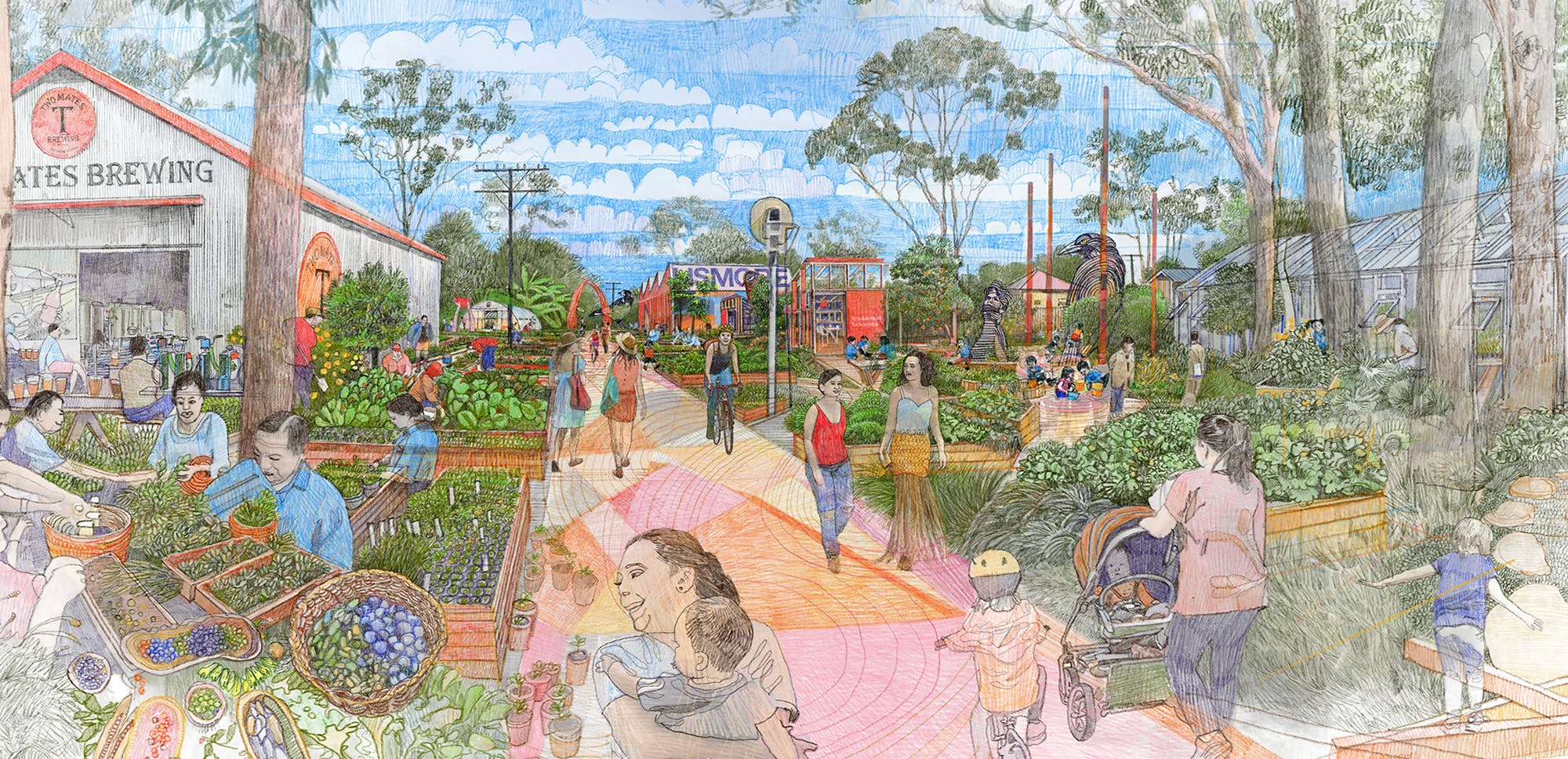
A reimagined South Lismore. Illlustrator by Mark Gerada.
Expert design panel
The co-design process brought together a powerhouse of technical expertise through an expert design panel.
Our panel brings together expertise in design, planning, housing, engineering, and architecture from around the country and locally to Lismore to look at the issues around designing and rebuilding a better, more resilient downtown Lismore. Their work aims to address the challenges defined by our communities and our research.
Below are the members of our expert design panel.

Marco Geretto
Marco is a Principal Design Advisor at the Government Architect NSW.
He is a trained urban designer with over 20 years of international experience. After completing architectural and urban design qualifications at the University of Cape Town he moved to London where he worked at a number of cutting edge, interdisciplinary design and planning practices. He returned to South Africa in 2009 where he registered as an architect and town planner and worked at the City of Cape Town for six years.
In 2018 he moved to Sydney and accepted Studio Associate position at SJB where he led a team undertaking large scale masterplanning and urban design projects, primarily for public sector clients. He has taught, lectured and examined at the UCT, UNSW and UTS. In 2013 he co-founded the NGO Open Streets Cape Town and was a board member until late 2017.

Kate Sweetapple
Professor, School of Design, University of Technology (UTS)
Kate’s area of research is visualisation and its capacity to make sense of complex systems and create meaningful communications. Through design-led research, she demonstrates how visualisation reveals patterns and relationships that are otherwise hard to see. This process engages diverse communities and enables new insights. Her research is increasingly focused on the role of design in shaping systems, services, and social practices in the contemporary care space, including health, disability, and ageing.
Kate has upcoming publications on Design for Social Innovation, Care Labour and Digital Interfaces, and in the Routledge Companion to Design Research. Her experimental cartographic series, Maps of Sydney (Avian, Fish and Celestial surnames), has been acquired by the National Library of Australia, the National Gallery of Australia, and the Australian National Maritime Museum.

John Choi
John Choi is co-founder and director of CHROFI, a dynamic architectural practice that operates across a wide portfolio from houses to cities. Over the past 20 years, John’s leadership has driven practice's holistic and place-based design approach that drives urban, social and environmental outcomes. He is passionate about how design can expand the way we live. Awards include Jørn Utzon Award for International Architecture, World Architecture Festival and a prize recipient in the AR Award for Emerging Architecture.
John served as Adjunct Professor of Architecture at University of Sydney from 2010-2018; is a member of NSW State Design Review Panel, and is Deputy Chair of 4A Centre for Contemporary Asian Art.

Ben Hendriks
Founder & Executive Chair, MECONE
Mecone is a leading Australian town planning and urban design consultancy with offices in Sydney, Melbourne, and Brisbane.
With over 20 years of experience in the industry, Ben has built a reputation for providing valuable planning and design advice to clients in both the public and private sectors. His expertise covers a wide range of planning areas, including strategic planning, statutory planning, and urban design.

Oli Costello
Executive Director, Jagun Alliance Aboriginal Corporation
Oli is a Bundjalung man from the Northern Rivers of NSW, with a diverse range of personal and professional expertise in culturally connected stewardship of Country. He is focused on First Nations knowledge and practice in caring for Country through regenerative cultural practices that support preparedness, recovery and resilience in relation to fire, floods and storms.
He is also Vice President of the Northern Rivers Fire and Biodiversity Consortium.

Michael Spackman
Director, SMM
Michael is a landscape architect and urban designer with over 30 years experience. He has successfully completed many projects in Australia and overseas and maintains a strong interest in the solutions for urban landscapes through ecologically sound principles. He is committed to the role that a healthy public domain plays in the cultural and political life of Australian society. These interests have guided SMM to preeminence as one of Australia’s leading firms of landscape architecture practising in the public domain with a particular focus on regional and environmental strategies as well as award winning urban design outcomes.
In 2011 Michael was made a Fellow of the Australian Institute of Landscape Architects in recognition of his commitments to the environment, his on-going participation on industry panels and for services to the NSW Chapter as State President and numerous committees and juries.

Sharon Wright
Principal, Head of Design, Hassell Studio
A landscape architect with a wealth of global experience, Sharon has worked in our London and Sydney studios, contributing to high-profile international projects such as the Melbourne Arts Precinct in Australia and Huangpu East Bank Urban Forest in China.
Whatever the work, she believes the best design builds a genuine sense of place, and she draws inspiration from a site’s specific context, history and character.
One of our global Heads of Design, Sharon is a calm, thoughtful collaborator who flourishes in an environment where talented people from different disciplines come together to test diverse ideas in pursuit of a common goal.
She brings an artist’s sensibilities to her work, creating beautiful concepts that inspire people and spark joy.

Craig Allchin
Director, Six Degrees Urban
Craig is an urban designer director who has practiced in architecture and strategic planning.
He has worked on the city across a range of scales. In the 1990’s, as a founding partner of Six Degrees Architects, Craig worked on recycling and renewal projects around the revitalization of the Melbourne City Centre.
Craig moved to Sydney and spent five years working between Sydney and China completing over 40 district and city masterplans. He was then Director of Urban Design for the NSW Government’s Metropolitan Strategy for Sydney, the 25-year masterplan for Greater Sydney, before spending 4 years in the USA including teaching at UPenn.
Since returning to Australia in 2016 he has consulted to Government and Private sector clients focusing on major urban renewal projects, masterplans and fine grain strategies.

Alison Page
Associate Dean, Faculty of Design, Architecture & Building, UTS
Professor Alison Page, a Walbanga and Wadi Wadi woman, is Associate Dean (Indigenous Leadership and Engagement), at UTS's Faculty of Design Architecture & Building, and an award-winning Designer and Film Producer.
Professor Page’s work has recently taken her into a collaboration with global appliance maker Breville, resulting in a world-first partnership between First Nations People and the National Museum of Australia that creates products for the heart of the home, celebrates contemporary design, and reflect 65,000 years of ongoing Australian Indigenous culture.

Martin Bryant
Professor, University of Technology Sydney (UTS)
Martin is a landscape architect, architect, urban designer and Professor. As a practitioner he has led numerous high-profile practice projects in Australia and New Zealand, and has received numerous high-profile awards for his work, including the Lloyd Rees Award for Urban Design, Supreme awards from the NZIA and NZILA, and the 2013 Rosa Barba Prize.
In academia, Martin’s research expertise on urban ecology and resilience is internationally recognised for policy development. He has received various awards for his work, including the Charlie Challenger NZILA award and has exhibited at the Venice Architecture Biennale (2021) and authored the United Nations Habitat III policy paper on urban ecology and resilience (2017).

Nicole Gurran
Professor of Urban and Regional Planning, University of Sydney
At the University of Sydney, Nicole directs the University’s Henry Halloran Research Trust. She has led numerous studies on urban planning, housing, regional development and climate change, funded by the Australian Research Council, the Australian Housing & Urban Research Institute, as well as state and local government. She has authored several books including Urban Planning and the Housing Market (2017, Palgrave), Politics, Planning and Housing Supply in Australia, England and Hong Kong, (Routledge, 2016), and Australian Urban Land Use Planning (2011).
Beyond academia, Professor Gurran serves as a State appointed independent expert member of the Sydney Western City Planning Panel advising on regionally significant planning decisions. She is a Fellow of the Planning Institute of Australia.
Nicole grew up in Lismore.

James de Vries
Strategic Design Consultant
James has a deep expertise in the strategy and design of communication strategies and editorial products across the spectrum of media.
James redesigned and worked as Creative Director at Harvard Business Review Publishing in the USA for seven years from 2011 to 2017. On returning to Australia in 2018 James worked in strategic Innovation with Second Road, an Accenture Strategy company.
Previously James was the founder and director of de Luxe & Associates, a specialty design firm that worked with a range of global publishing clients to design publications – ranging from corporate presentations to national newspapers and magazines. He is also an Adjunct Professor of Design at UTS and a graduate in Visual Communication.
James teaches in the Masters of Design degree. He is a member of the Dean’s Advisory Board for the Faculty of Design Architecture and Building and on the Steering Committee for the UTS Digital Presence project. An experienced leader, teacher and practitioner, James is committed to helping organisations succeed through sharper strategic ambition and better integration of storytelling and intent.

Charlie Hewitt
Senior Civil Engineer, Barker Ryan Stewart
Charlie has over 18 years of experience working as a civil and environmental engineer in the land development industry throughout the Northern Rivers and surrounding regions. He has worked on the design and delivery of natural resource management, public infrastructure, large constructed wetlands, private commercial developments, and medium to large subdivisions.
With a solid background in industry conventions, he understands that new ways of conceiving and designing urban environments are necessary so that the places we live can help us to build ‘social capital’, the glue that maintains communities in times of strain and crisis.

Jamie Simmonds
Principal Consultant, Watertech
Jamie has spent over 20 years in the disaster recovery, planning and development fields across both the private and public sectors. Starting his career in local government, he has consulted to local and state authorities, worked with private sector entities and headed up the planning and development for a property investment firm.
Jamie is considered an expert in the field of managed retreat and community relocation following natural disasters. In 2011, he was the Director of the relocation of the town of Grantham, Queensland following devastating flash flooding that took the lives of 19 people. In only 11 months after the flood, his project put flood-devastated families into their new homes in a new estate on higher ground. Within 2 years, over 100 families had a new life safe from any future floods. The relocation of Grantham is widely regarded as one of the most successful examples of community relocation or managed retreat in the world.
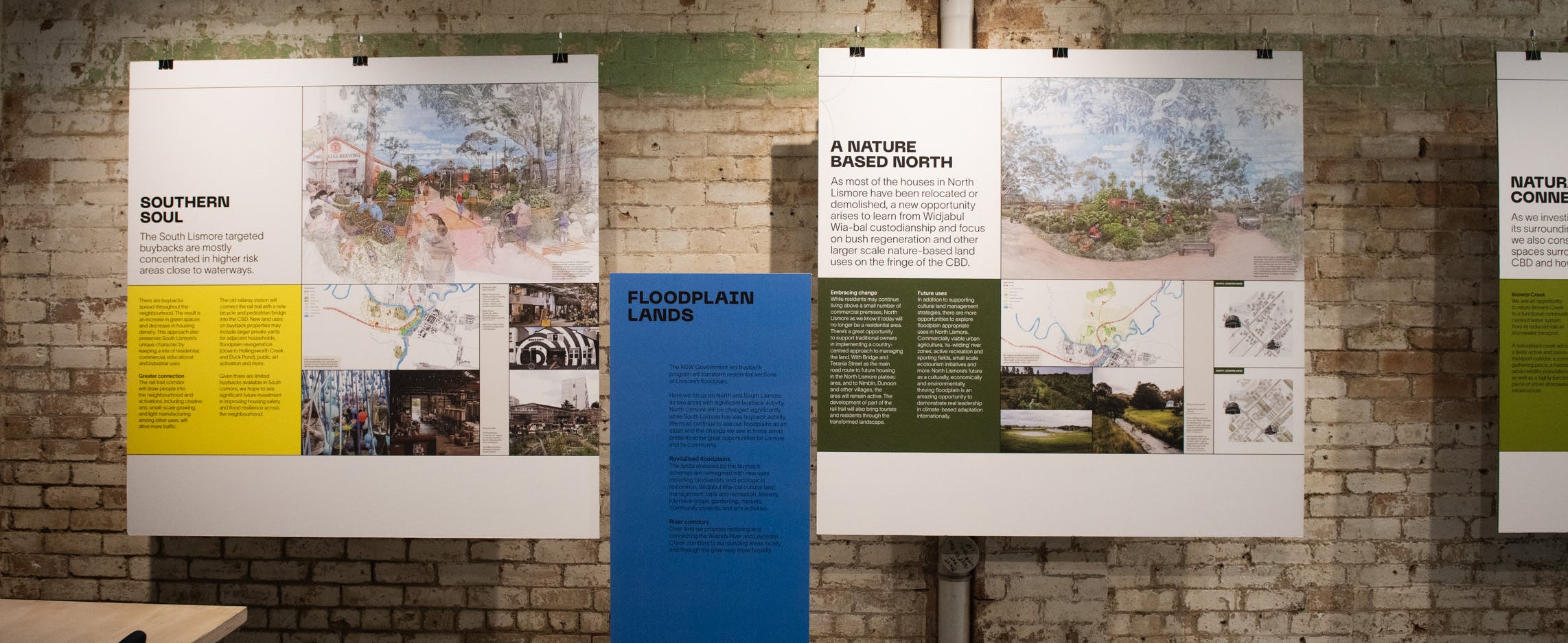
We shared the Look Ahead process and scenarios for a future Lismore in an exhibition. Visitors were able to prioritise the 5 scenarios and share ideas.
Exhibition in our shopfront
From June to August 2024, we shared scenarios for a future Lismore online and in our Lismore shopfront. Our community was invited to provide feedback on these scenarios during this time.
Missed the exhibition?
We've created a summary of the exhibition so you can explore our codesign process and the five scenarios for a future Lismore.
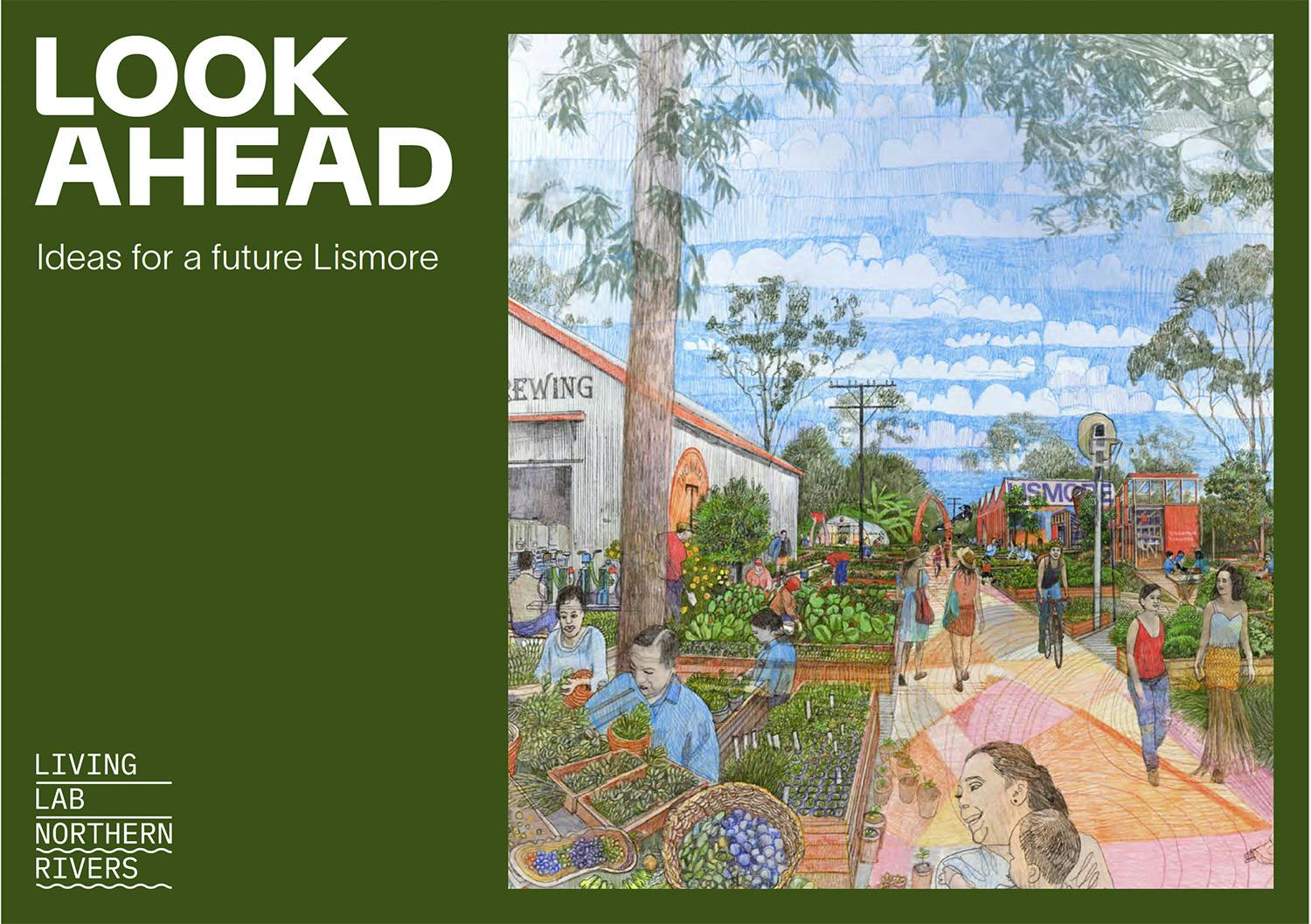
Where to from here?
We need support to turn these five scenarios into detailed and actionable plans. The Look Ahead process shows that community-centred engagement, when combined with technical expertise, can deliver a legitimate, science-backed and actionable plan ready to drive real change.
Lismore deserves a creative and constructive planning process for its future. Look Ahead wasn’t commissioned by government – it was initiated independently by Living Lab Northern Rivers, who stepped up to fill a gap in resilience planning for our future. This independence let Look Ahead move quickly, bringing together community voices, diverse expertise and fresh ideas.
But without government backing, we don’t have the resources or authority to put this vision into action. To move forward, we need support to turn these five scenarios into detailed and actionable plans. And to do that, Look Ahead needs further engagement by government at all levels.
In practical terms, we need to work directly with groups that have the resources and authority to implement Look Ahead’s vision.

